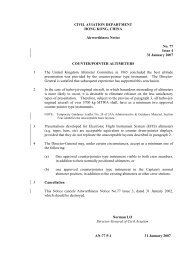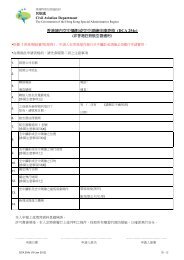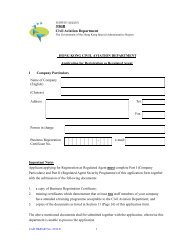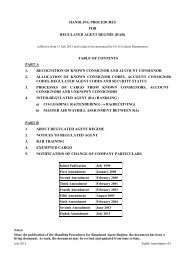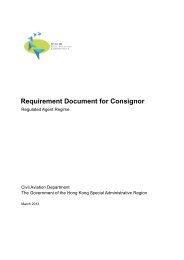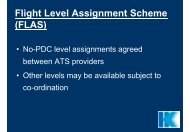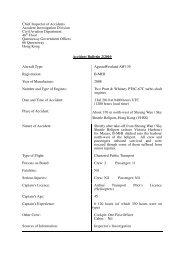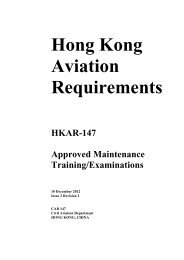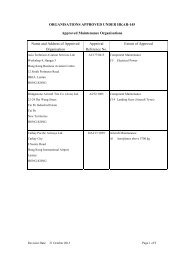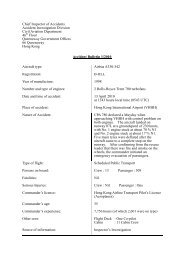CAD 516 Ground Proximity Warning System
CAD 516 Ground Proximity Warning System
CAD 516 Ground Proximity Warning System
You also want an ePaper? Increase the reach of your titles
YUMPU automatically turns print PDFs into web optimized ePapers that Google loves.
8. ACTION TO BE TAKEN ON RECEIVING ALERTS AND WARNINGS<br />
8.1 Basic GPWS<br />
(Equipment which gives no indication of Mode other than Mode 5)<br />
Examples of this equipment are Marconi and Sundstrand Mk 1.<br />
8.1.1 Action To Be Taken On Receiving An Alert<br />
With this type of GPWS, alerts can only be associated with Mode 5 and will<br />
be indicated aurally by repetition of the audio ‘GLIDESLOPE’. The crew is<br />
required to take immediate action to regain the ILS glide slope, which will be<br />
above the aircraft and, in doing so, will cause the alert to cease.<br />
8.1.2 Action To Be Taken On Receiving a <strong>Warning</strong><br />
The immediate response must be to select maximum thrust, level the wings,<br />
confirm that speedbrakes are stowed and initiate a maximum gradient climb,<br />
which should be maintained until the aircraft attains the minimum safe altitude<br />
for that part of the route being operated, and the warning ceases. Unless it is<br />
known for certain that maintaining a wings-level attitude will further<br />
compromise terrain clearance, a curved recovery path should not be initiated.<br />
Where a curved path is deemed to be necessary, the establishment of the<br />
maximum climb rate consistent with the required angle of bank must be<br />
adopted. When established in the climb every effort shall be made to<br />
determine the cause of the warning and to verify the aircraft’s position.<br />
Issue 1 11 June 2001



